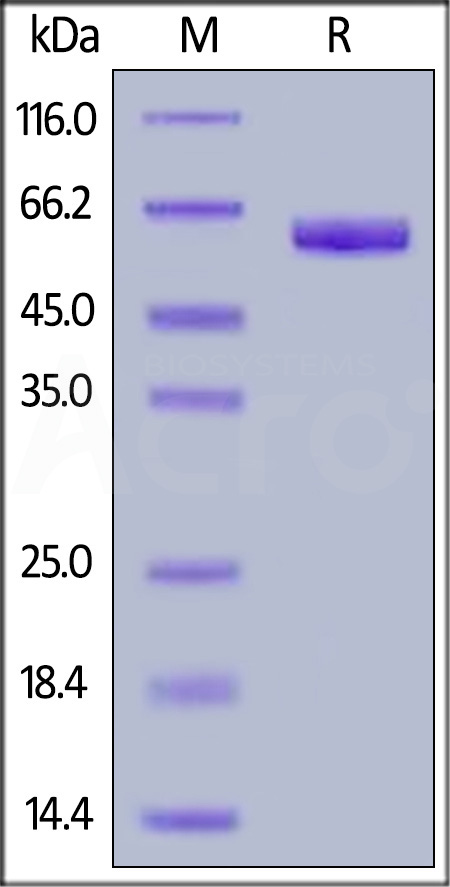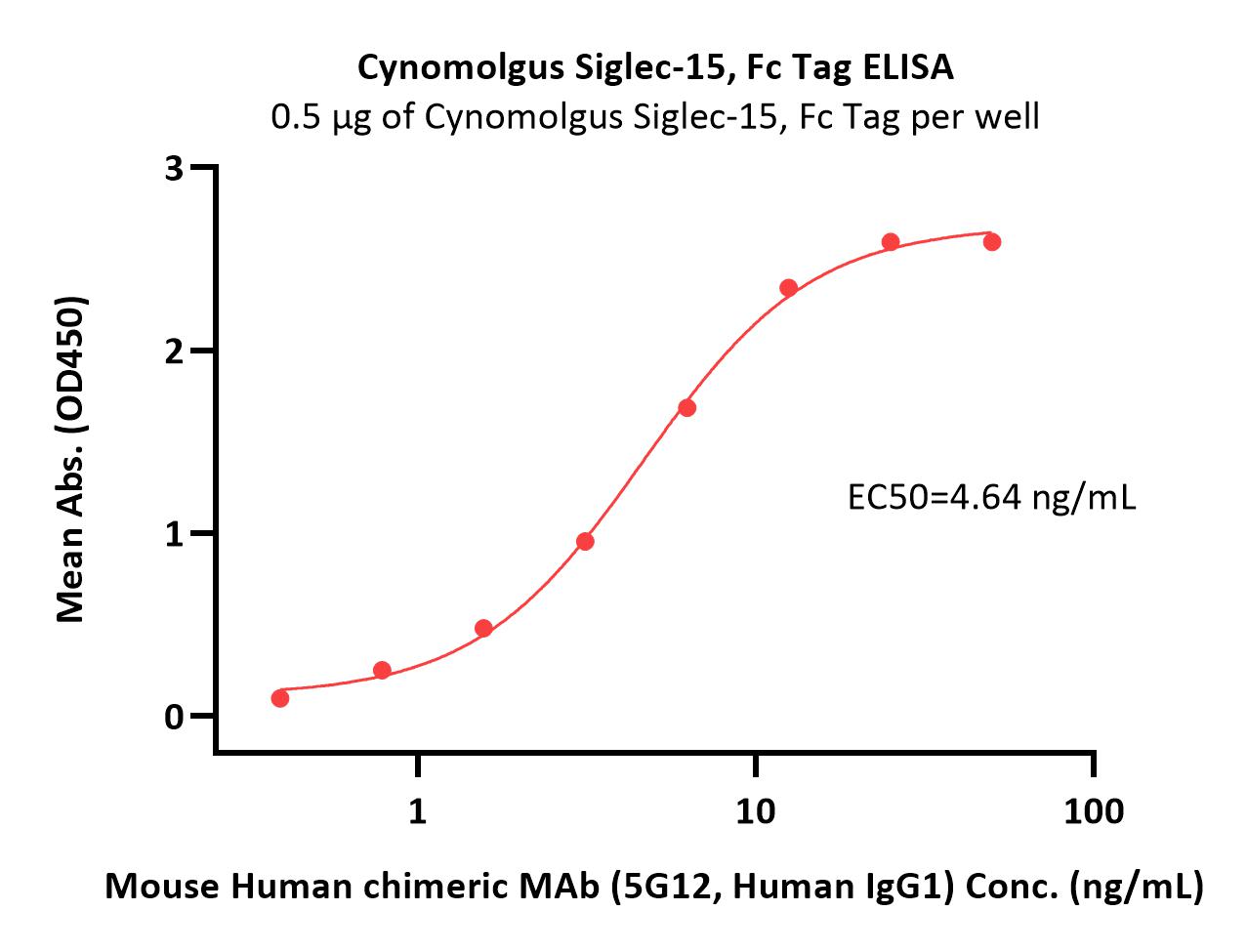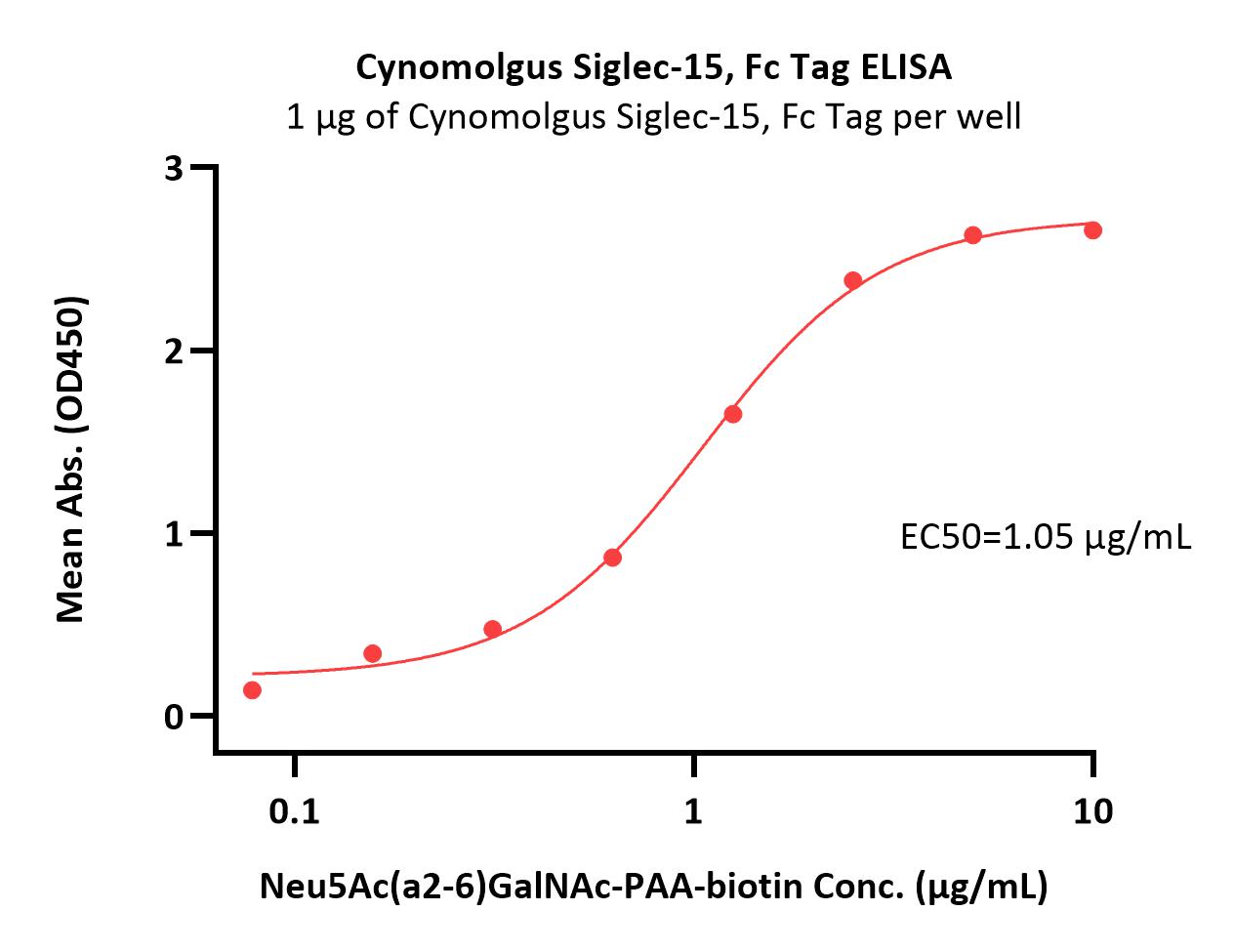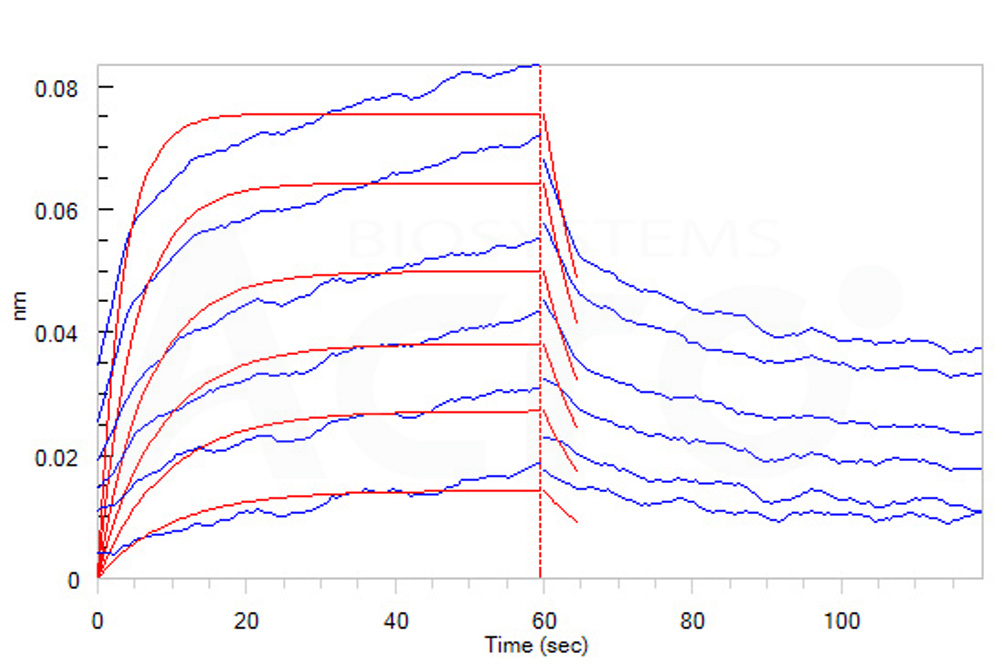分子别名(Synonym)
CD33 antigen-like 3,SIGLEC-15,CD33L3,sialic acid-binding Ig-like lectin 15,Siglec15,Siglec-15
表达区间及表达系统(Source)
Rhesus macaque Siglec-15 Protein, Fc Tag (SG5-C5253) is expressed from human 293 cells (HEK293). It contains AA Phe 20 - Thr 263 (Accession # F7ETM4).
Predicted N-terminus: Phe 20
Request for sequence
蛋白结构(Molecular Characterization)

This protein carries a human IgG1 Fc tag at the C-terminus.
The protein has a calculated MW of 52.7 kDa. The protein migrates as 60-65 kDa under reducing (R) condition (SDS-PAGE) due to glycosylation.
内毒素(Endotoxin)
Less than 1.0 EU per μg by the LAL method.
纯度(Purity)
>95% as determined by SDS-PAGE.
制剂(Formulation)
Lyophilized from 0.22 μm filtered solution in 50 mM Tris, 100 mM Glycine, 150 mM NaCl, pH7.5 with trehalose as protectant.
Contact us for customized product form or formulation.
重构方法(Reconstitution)
Please see Certificate of Analysis for specific instructions.
For best performance, we strongly recommend you to follow the reconstitution protocol provided in the CoA.
存储(Storage)
For long term storage, the product should be stored at lyophilized state at -20°C or lower.
Please avoid repeated freeze-thaw cycles.
This product is stable after storage at:
- -20°C to -70°C for 12 months in lyophilized state;
- -70°C for 3 months under sterile conditions after reconstitution.
质量管理控制体系(QMS)
电泳(SDS-PAGE)

Rhesus macaque Siglec-15 Protein, Fc Tag on SDS-PAGE under reducing (R) condition. The gel was stained with Coomassie Blue. The purity of the protein is greater than 95%.
活性(Bioactivity)-ELISA

Immobilized Rhesus macaque Siglec-15, Fc Tag (Cat. No. SG5-C5253) at 5 μg/mL (100 μL/well) can bind Mouse Human chimeric MAb (5G12, Human IgG1) with a linear range of 0.4-6 ng/mL (QC tested).
Protocol

Immobilized Rhesus macaque Siglec-15, Fc Tag (Cat. No. SG5-C5253) at 10 μg/mL (100 μL/well) on Diamond Protein A Protein, His Tag precoated (0.5 μg/well) plate, can bind Neu5Ac(a2-6)GalNAc-PAA-biotin with a linear range of 0.078-1.25 μg/mL (Routinely tested).
Protocol
活性(Bioactivity)-BLI

Loaded Rhesus macaque Siglec-15 Protein, Fc Tag (Cat. No. SG5-C5253) on ProteinA Biosensor, can bind Neu5Ac(a2-6)GalNAc-PAA-biotin with an affinity constant of 0.62 μM as determined in BLI assay (ForteBio Octet Red96e) (Routinely tested).
Protocol
背景(Background)
Siglec-15 is a DAP12-associated immunoreceptor, which belongs to the immunoglobulin superfamily and SIGLEC (sialic acid binding Ig-like lectin) family. Siglecs are cell surface proteins that bind sialic acid. They are found primarily on the surface of immune cells and are a subset of the I-type lectins. Siglec-15 consisting of immunoglobulin (Ig)-like domains, transmembrane domain and a short cytoplasmic tail. Siglec-15 is that recognizes sialylated glycans and regulates osteoclast differentiation. Siglec-15 is a potential therapeutic target for osteoporosis and plays a conserved regulatory role in the immune system of vertebrates.























































 膜杰作
膜杰作 Star Staining
Star Staining




















